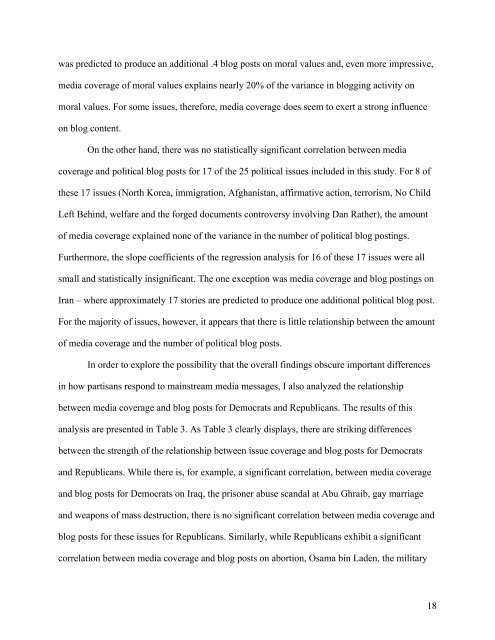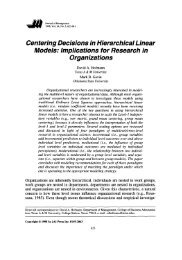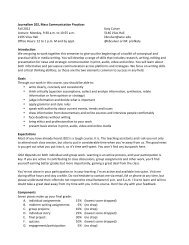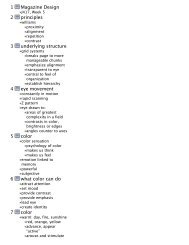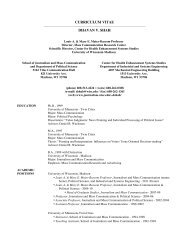Political Blogs and the Bloggers Who Blog Them - School of ...
Political Blogs and the Bloggers Who Blog Them - School of ...
Political Blogs and the Bloggers Who Blog Them - School of ...
You also want an ePaper? Increase the reach of your titles
YUMPU automatically turns print PDFs into web optimized ePapers that Google loves.
was predicted to produce an additional .4 blog posts on moral values <strong>and</strong>, even more impressive,<br />
media coverage <strong>of</strong> moral values explains nearly 20% <strong>of</strong> <strong>the</strong> variance in blogging activity on<br />
moral values. For some issues, <strong>the</strong>refore, media coverage does seem to exert a strong influence<br />
on blog content.<br />
On <strong>the</strong> o<strong>the</strong>r h<strong>and</strong>, <strong>the</strong>re was no statistically significant correlation between media<br />
coverage <strong>and</strong> political blog posts for 17 <strong>of</strong> <strong>the</strong> 25 political issues included in this study. For 8 <strong>of</strong><br />
<strong>the</strong>se 17 issues (North Korea, immigration, Afghanistan, affirmative action, terrorism, No Child<br />
Left Behind, welfare <strong>and</strong> <strong>the</strong> forged documents controversy involving Dan Ra<strong>the</strong>r), <strong>the</strong> amount<br />
<strong>of</strong> media coverage explained none <strong>of</strong> <strong>the</strong> variance in <strong>the</strong> number <strong>of</strong> political blog postings.<br />
Fur<strong>the</strong>rmore, <strong>the</strong> slope coefficients <strong>of</strong> <strong>the</strong> regression analysis for 16 <strong>of</strong> <strong>the</strong>se 17 issues were all<br />
small <strong>and</strong> statistically insignificant. The one exception was media coverage <strong>and</strong> blog postings on<br />
Iran – where approximately 17 stories are predicted to produce one additional political blog post.<br />
For <strong>the</strong> majority <strong>of</strong> issues, however, it appears that <strong>the</strong>re is little relationship between <strong>the</strong> amount<br />
<strong>of</strong> media coverage <strong>and</strong> <strong>the</strong> number <strong>of</strong> political blog posts.<br />
In order to explore <strong>the</strong> possibility that <strong>the</strong> overall findings obscure important differences<br />
in how partisans respond to mainstream media messages, I also analyzed <strong>the</strong> relationship<br />
between media coverage <strong>and</strong> blog posts for Democrats <strong>and</strong> Republicans. The results <strong>of</strong> this<br />
analysis are presented in Table 3. As Table 3 clearly displays, <strong>the</strong>re are striking differences<br />
between <strong>the</strong> strength <strong>of</strong> <strong>the</strong> relationship between issue coverage <strong>and</strong> blog posts for Democrats<br />
<strong>and</strong> Republicans. While <strong>the</strong>re is, for example, a significant correlation, between media coverage<br />
<strong>and</strong> blog posts for Democrats on Iraq, <strong>the</strong> prisoner abuse sc<strong>and</strong>al at Abu Ghraib, gay marriage<br />
<strong>and</strong> weapons <strong>of</strong> mass destruction, <strong>the</strong>re is no significant correlation between media coverage <strong>and</strong><br />
blog posts for <strong>the</strong>se issues for Republicans. Similarly, while Republicans exhibit a significant<br />
correlation between media coverage <strong>and</strong> blog posts on abortion, Osama bin Laden, <strong>the</strong> military<br />
18


